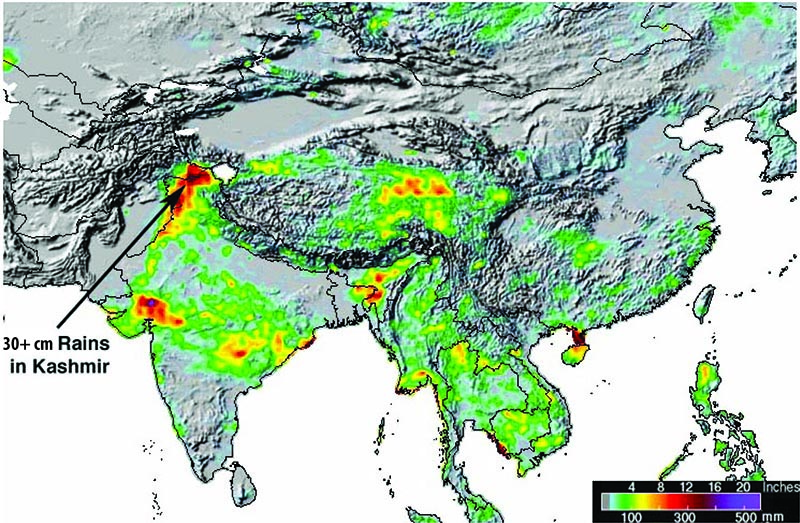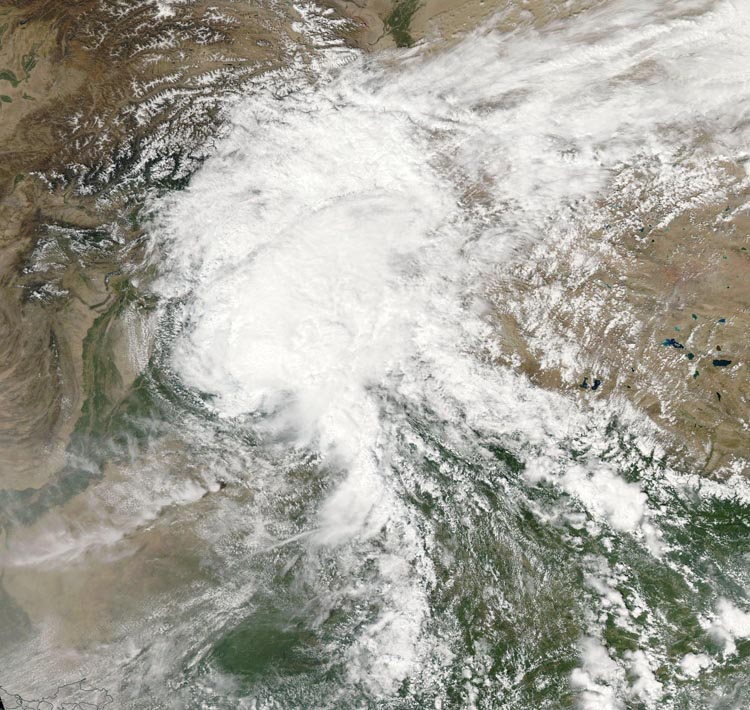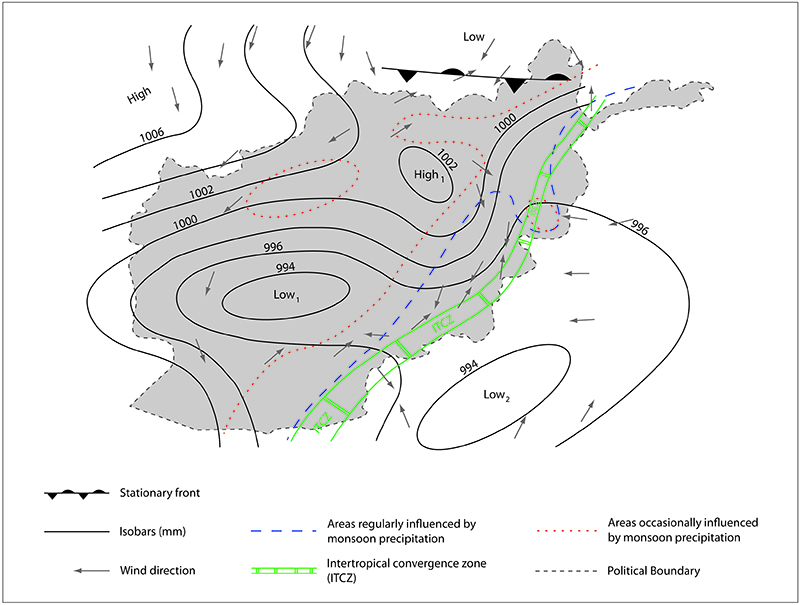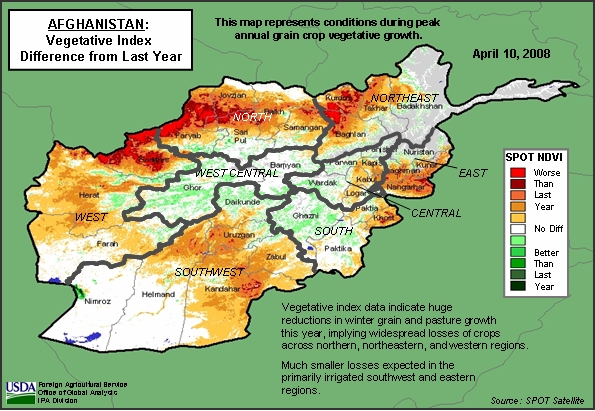Distance Learning Module 5 - Measuring Water
Water Volume Measures and Water Accounting
- Volumes of water are measured in cubic meters (m3) or cubic kilometers (km3).
- Flowing volumes of water are measured in cubic meters or cubic km per second (km3/sec).
- One cubic km of water equals one billion cubic meters (bcm) – (1km3 = 1 BCM).
- Traditional measures of water flow have been calculated by measuring the channel width (in m) and channel depth (in m), together with the water-flow velocity (in m/sec) to give the water-flow volume when multiplied together (m3/sec).
- Many rivers have a known measured width and depth at certain places where the velocity can be measured periodically to obtain average river-water discharge (m3/sec).
- In the 1950s – 1970s, the US Geological Survey (USGS) and the Afghanistan Geological Survey (AGS) built weirs or places on the river banks of Afghanistan to measure river discharge but most were destroyed after the Soviet invasion in 1979.
- Since 2002, many new discharge stations have been re-erected all over Afghanistan to gather river water discharges again (Figure 5.1).

Figure 5.1. Map of the new stream gauges installed in Afghanistan by the Afghanistan Geological Survey (AGS) and the US Geological Survey. Why are there so few water gauges in the central and southeast parts of the country?
- The collection of precipitation measuring stations also enables mapping the amount of rain in the country (Figure 5.2).

Figure 5.2. Average annual precipitation in Afghanistan and surrounding countries in mm. The map shows clearly that the average rainfall and snow fall are highest in the mountains of the northeast (dark blue and purple), and lowest in the Southwest of Afghanistan (orange-red).
- Snowfall depths can be measured with radar beamed down from satellites in orbit and the snow depth or thickness converted to snow-water equivalent to predict most likely river discharges when the snow melts (Figure 5.3).

Figure 5.3. MODIS satellite image ‘pictures’ of the snowfall in Afghanistan on 23 March 2007 and 2008. What can you say about irrigation from these satellite pictures?
- The US Geological Survey and the US Agency for International Development have been collecting such snowfall water data for Afghanistan for about 10 years. This can be obtained each year for free.
- All this information helps the Government of Afghanistan to plan for irrigation agriculture each year.
- The information also helps Afghans to negotiate successfully with neighboring countries over later water distributions.
- Some satellite imagery can be obtained in near real time, that is, very soon after the image (picture) is taken by the satellite (Figures 5.4 and 5.5).

Figure 5.4. TRMM satellite measurements of rainfall can show where floods are occurring. This one showed that in September 2014 up to 356 mm of rain fell along the India – Pakistan border in Kashmir and caused huge floods. This rainfall was the result of the arrival of a strong monsoon low pressure over the region. The same thing happens in Afghanistan. Where is the most rainfall?

Figure 5.5. MODIS satellite picture of the monsoon low-pressure rainstorm of September 2014. Afghanistan is in the upper left-hand side of the picture, extending from the Spin Ghar Range and the Jalalabad valley, the Kabul Basin, up to the Amu Darya. The lakes of Tibet show on the right, and India is under the clouds in the lower right. Can you find the lower Indus River and the coast of Baluchistan?
- Low pressure areas are places of storm and rain. The ITCZ is the average condition of storm and rain in summertime, which happens mostly in Pakistan and Southeastern Afghanistan (Figure 5.6).

Figure 5.6. Weather map of Afghanistan in summer showing average location of monsoon low pressure (ITCZ – Intertropical Convergence Zone). When the monsoon rains come to Afghanistan, what two things happen?
- Each year in Afghanistan, the condition of the vegetation and the agriculture is the result of available water (Figure 5.7).

Figure 5.7. Map of Afghanistan in 2008 showing the vegetation index, which is made from satellite imagery. Where were the worst problems for agriculture, compared to 2007?